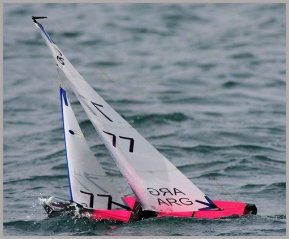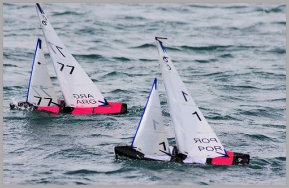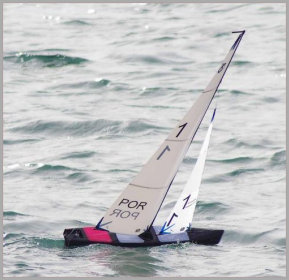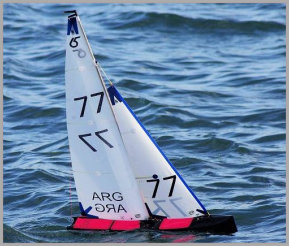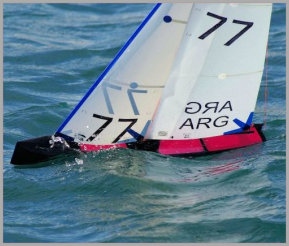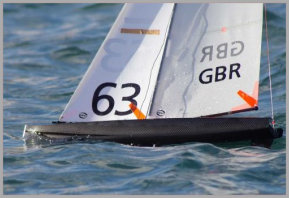RG65 Argon
|
The SAILSetc RG65. As the prototype was built and sailed by an Argentinian the name ARGON was chosen for fairly obvious reasons. And the rare gas Argon was identified by Lord Rayleigh who lived not far from our workshops. Hulls, kits and completed boats are available from BOATSetc.eu. |
|
|
|
The prototype sailing in company with Jorge Camillo's sistership. The No 2 and No 3 rigs use pocket luff mainsails and cantilevered masts. |
|
|
| The No 1 rig on the early boats was also a traditional rig based on a cantilevered mast. The proportions between main and headsail are quite similar to those used for a swing rig |
|
|
|
The mainsail head is attached to a ball raced head fitting that rotates around the centre of the mast tube. The backstay crane is integral to the same item. |
|
|
| Attention is paid to lowering the rig so that effective stability is increased. There is also a gain in the aerodynamic efficiency of the rig. |
|
|
| The receiver aerial on this boat is led up the mast. Modern receivers with twin aerials seem to work well even when the aerials are placed inside the hull itself. The key seems to be keeping them at 90 degrees to each other and placing them near the hatches in the hull that are covered by deck patch material. |
|
|
|
The bow of ARGON was modified after the first few were made to add freeboard and allow the deck at the bow to be more heavily cambered. And the bottom tip of the bow was raised a little clear of the statis waterline. |
|
|
|
The headsail boom swivel attachments are recessed into a slot in the foredeck. This helps lower the headsail boom and reduces the gap between boom and deck. All this helps the windward efficiency of the rig. |
|
|
|
The centralpart of the deck has a recess for the gooseneck used on the conventional rigs. The mast tube for the swing rig mast is visible just ahead of that recess. Aft of the recess is the hatch giving access to the radio control units that are located on the carbon/foam/carbon plate that is securely bonded into the hull via the fin box and the sheet post (the wire loop visible aft of the hatch). |
|
|
|
The recess in the deck for the gooseneck is a separate moulding that is added to the primary hull moulding during the completion stage. There is a small recess in the moulding for the fin bolt head. This moulding is not required if the boat will have swing rigs only. |
|
|
| A clearer shot of the plate to which the rc units are added. These have been removed but the lever arm for sail control and steering servo output arm are visible. |
|
|
|
The aft end of the boat is finished with a transom moulding that is bonded into the primary hull molding during the completion stage. The transom moulding has a hole for the drain bung, a 'smart hook' for the backstay, a block for the sheets and the upper end of the rudder trunking. The open space created by this feature is normally covered with deck patch material which helps prevent water getting near the hole for the servo/tiller connection and also reduces the risk of snagging a sheet or another boat's rigging on the tiller arm. |
|
|
|
Another view of the stern showing how the sheet exits the hull (through a fairlead bonded into the bulkhead), round the block and forward to the boom. The smal ball on the sheet enables a simple loop on the end of the main sheet to be attached. |
|
|
| The moulding used to close the stern of ARGON. |
|
|

